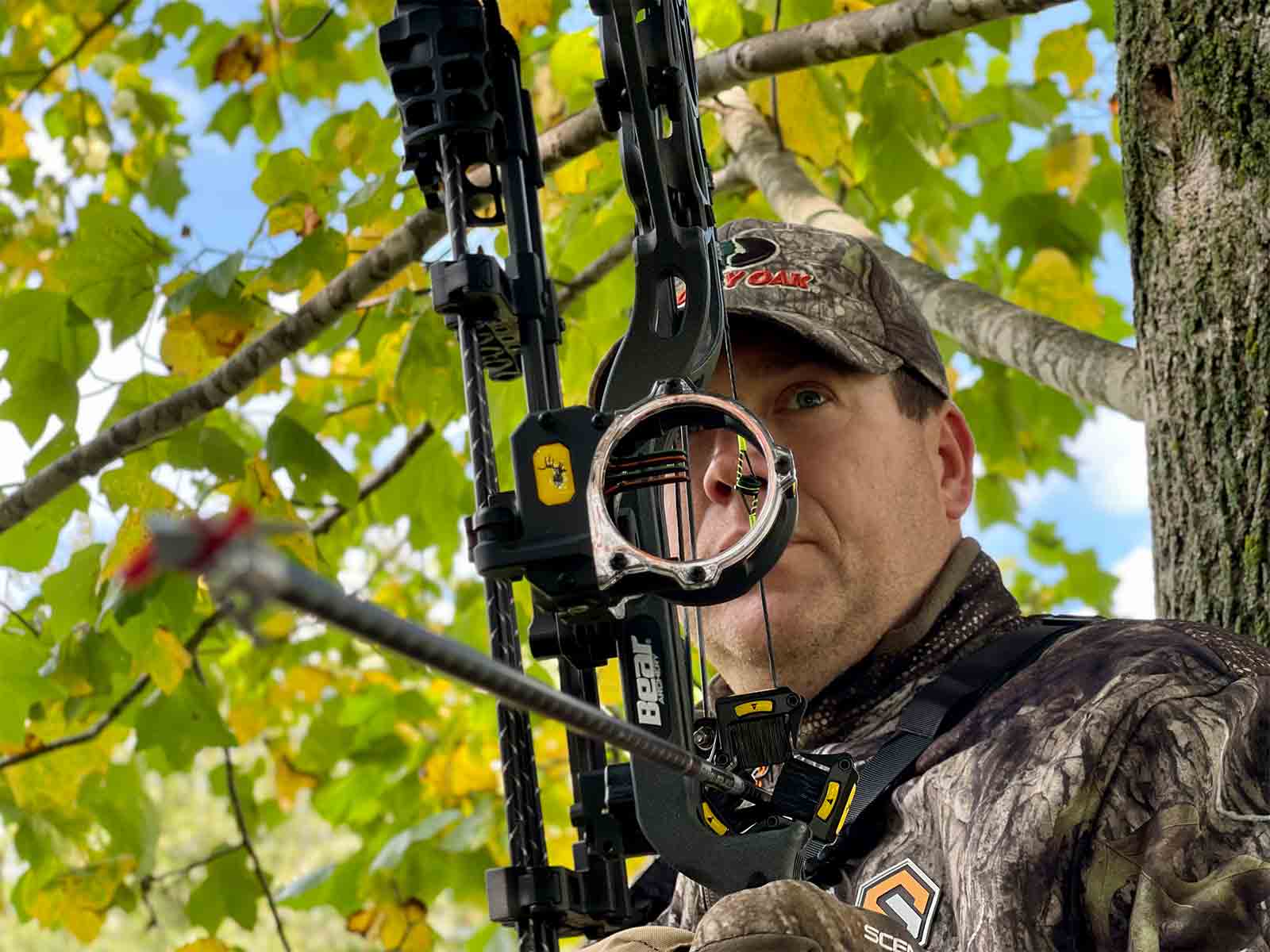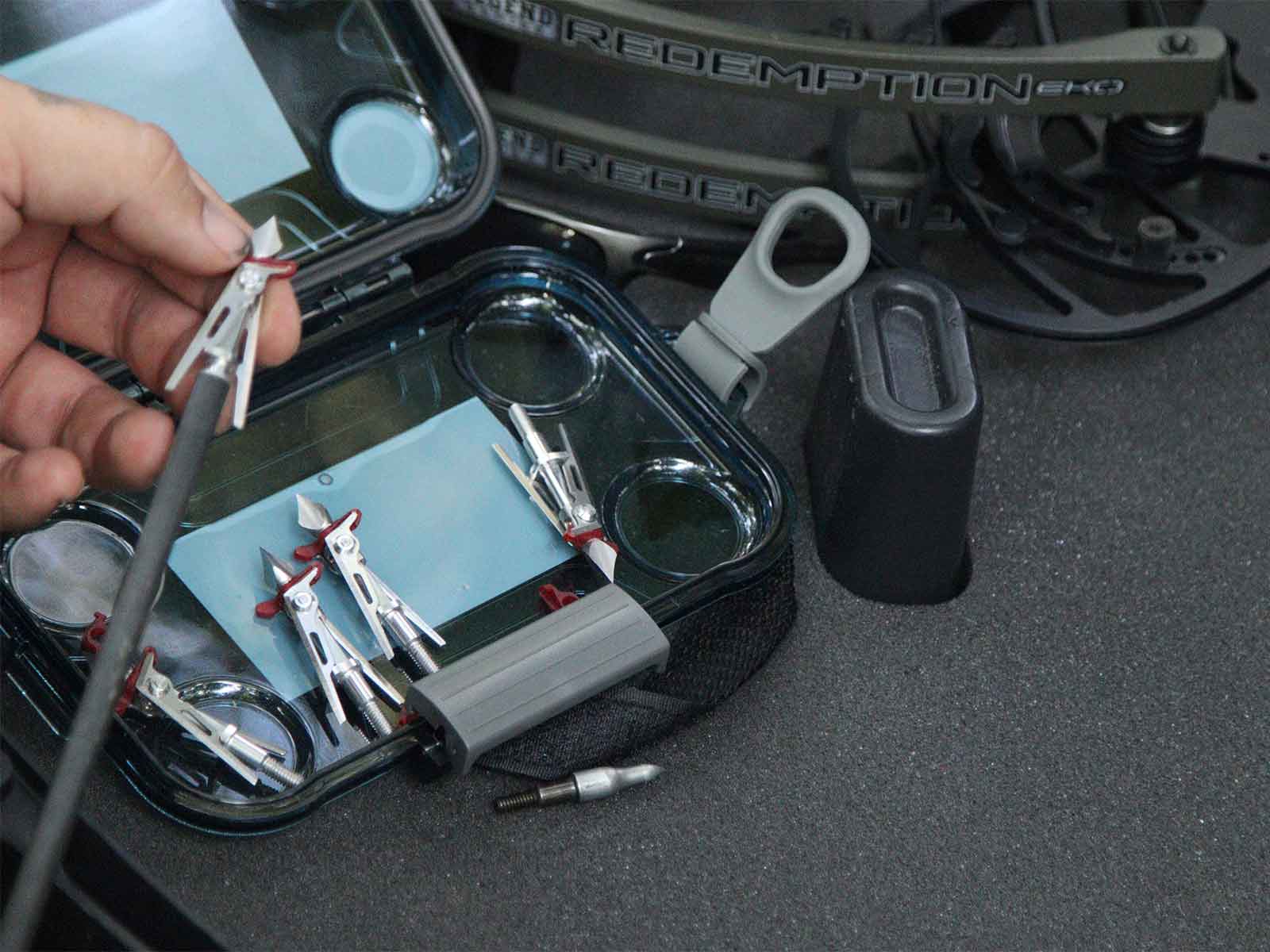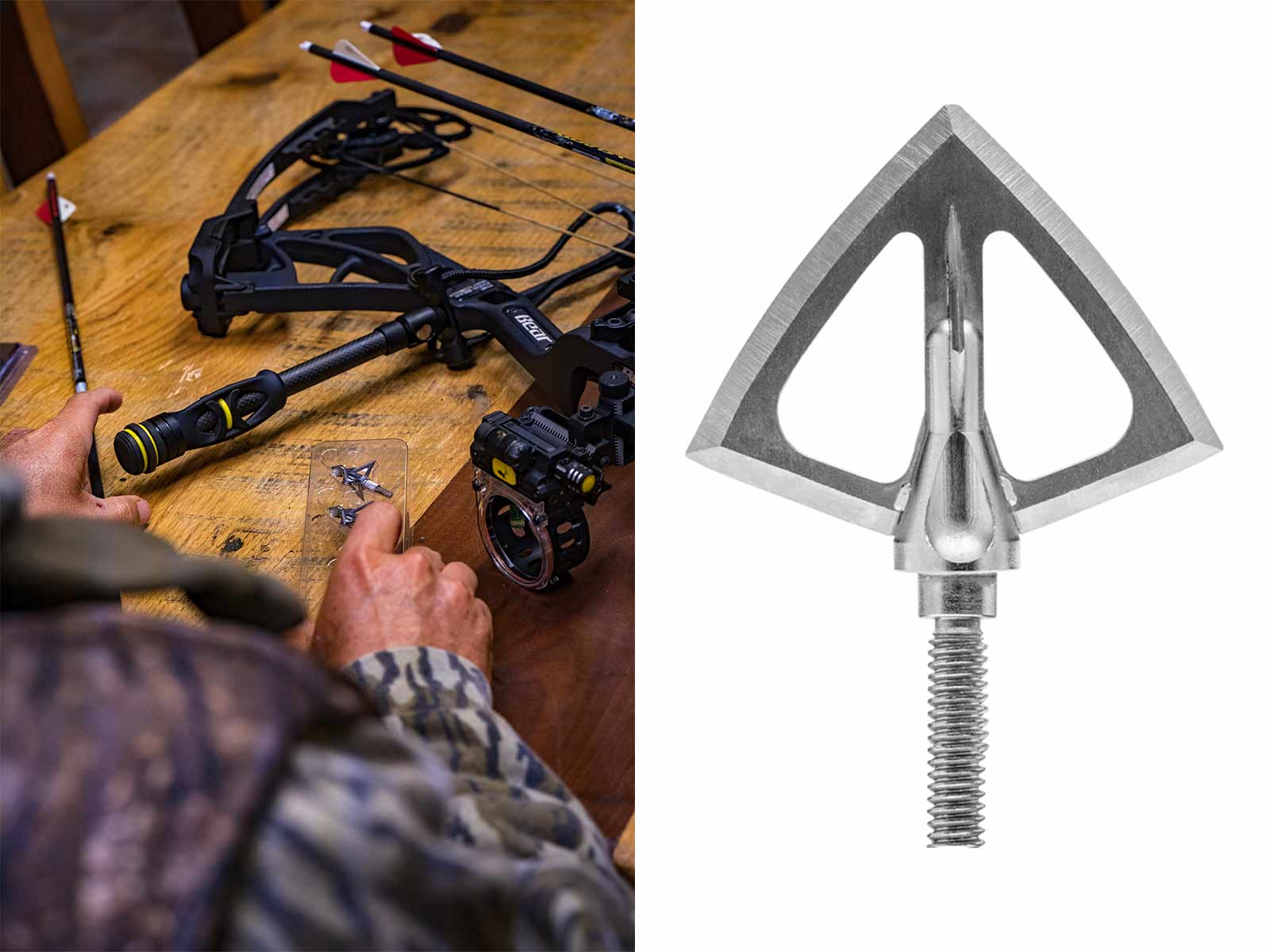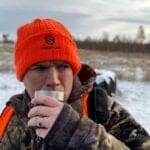“Where did you hit her?” Asked my good friend after I called him to assist me in my tracking efforts. An hour before calling for help, I had a doe stroll by at a mere fifteen yards, presenting me with a broadside shot opportunity. After a quick bleat from my natural voice, she stopped long enough for me to dial in with my bow and take the shot. After taking the shot at the mature doe, I watched her bolt off with half of my arrow sticking out of her. I was confident that I had hit my aiming point, yet I was concerned about the penetration being adequate to be fatal. The evening turned to complete darkness as I looked for the wounded doe for approximately an hour. I found my arrow forty yards from where the doe was standing when I took the shot. With little penetration, the arrow had fallen out with very little blood on it. Feeling somewhat defeated, I decided to mark the spot and come back the following morning with help from a couple of good friends.
As I expected, we did not find much blood after it was found at the arrow’s location. We spent an additional two hours searching the area for any blood or sign of a wounded deer, only to come up empty-handed. It is a hunter’s worst nightmare, wondering what happened. A million different scenarios run through your mind when you are unsure what happened. Upon further review, I concluded that the arrow weight, broadhead, and poundage of my bow were set on, and did not jive together, resulting in a non-lethal shot. Using a broadhead that does not fit well with the rest of your setup can be devastating when hunting. As in my experience, deer can be hit, yet not fatally. A lousy shot can result in being unable to find the deer afterward or missing the animal altogether.

Every hunter has a preference in broadhead types for whitetail deer. Some believe mechanicals are the only way to go; some say the traditional fixed broadheads are more trustworthy.
There is no correct answer as to which type of broadhead is the best for hunting whitetail deer because everyone shoots different equipment, has different opinions, and has been in different hunting scenarios. What we do know, however, is that both have their pros and cons. The mechanical broadhead has a new and improved vibe for deer hunters, even though they have been around for several years now. The mechanical broadhead is famous for two main reasons. One, they create a large cutting diameter, and number two, they have better accuracy than a field tip or a fixed traditional fixed blade style broadhead. A broadhead is a much different concept of taking down an animal than shooting a deer rifle with a hard-hitting bullet. A broadhead is designed to take down an animal because of hemorrhaging or excessive bleeding. More blood means easier to track blood trails and quicker recoveries. The skeptics to users of mechanicals say they steer clear because of fear of the broadhead not expanding properly and other malfunctions that can come from a broadhead that has moving parts. I will say during the earlier years of mechanicals, yes, that was probably true. However, with much-improved technology in today’s broadheads, hunters do not need to worry as much.

The traditional fixed broadhead is still strong in presence after many years of existence for a reason, they work. The long-lived fixed blade broadhead is popular among bowhunters because of the durability of being a more solid design and creating a hard-hitting effect when taking down big game. The fixed blade broadhead will still penetrate deep into a deer’s vitals, even among hunters with lower poundage settings on their bow. Working well with lower poundage is why this style of broadhead has been around for a while. Compared to newer bows, all the bows were low poundage. Yet, like that of newer technology in mechanicals, the newer fixed blade has also gained effectiveness. The fall back to fixed blade broadheads is a less accurate flying arrow and the risk of losing the sharpness of the blades after practicing or shooting through a deer, making it less deadly over time. Plus, fixed blades have a harder hit, but they do not create as much a wound, resulting in less blood to track. So, what is the best broadhead to use? Choosing the proper broadhead for your setup is like that of patterning a shotgun for turkey season. And like that of a shotgun, each hunter has a different model and a different preference. Until you shoot different loads, chokes, and guns to see how each performs before, you will not know what the best is for you specifically. The same goes for bowhunters looking to find the right broadhead. It is crucial to shoot different types of broadheads, different grains of broadheads, arrow setups, and bow setups before knowing how each will perform to your specific needs.
For my preference, I like a broadhead that has the accuracy of a field point. I spend two to three months before the hunting season shooting my bow in the backyard to improve my accuracy and familiarize myself with all my equipment before hunting. There is nothing more aggravating than to practice one way for an extended period, only to have it all change when my field tips are replaced with a broadhead. I shoot a Bear Archery Redemption EKO bow for my hunting setup, set on approximately sixty-eight pounds. My arrows are Easton FMJ 5mm arrows, size four hundred. I use Sik Broadheads SK2 mechanical broadheads. With my setup, I get speed, accuracy, and with the SK2’s I have a total cutting surface of 3.625 inches and a 2” offset entry wound, which results in massive blood trails that end in a quick and clean harvest.

The most prominent mistake hunters make when choosing the proper broadhead is not knowing how it shoots from their bow setup. It is common to hear hunters say they practice all summer, then a week before the season, they put a broadhead on and shoot it one time to make sure they still are on target. In my opinion, one must take time to practice with the exact setup used while hunting and practice often. I typically take one of my hunting broadheads and use it solely for practicing. Each time I shoot a couple of rounds of practice, I make sure to shoot an arrow with an attached broadhead a couple of times each round. Practicing often with field points and broadheads each time, I can assure that my accuracy is precisely the same.
There is no definite answer to give a hunter when choosing the correct broadhead for white-tailed deer hunting. The resolution is to choose the one that shoots the best with your setup and whatever you have built your confidence in when practicing. In the end, we all have the same goal; to have a setup that will effectively harvest an animal quickly and successfully.

